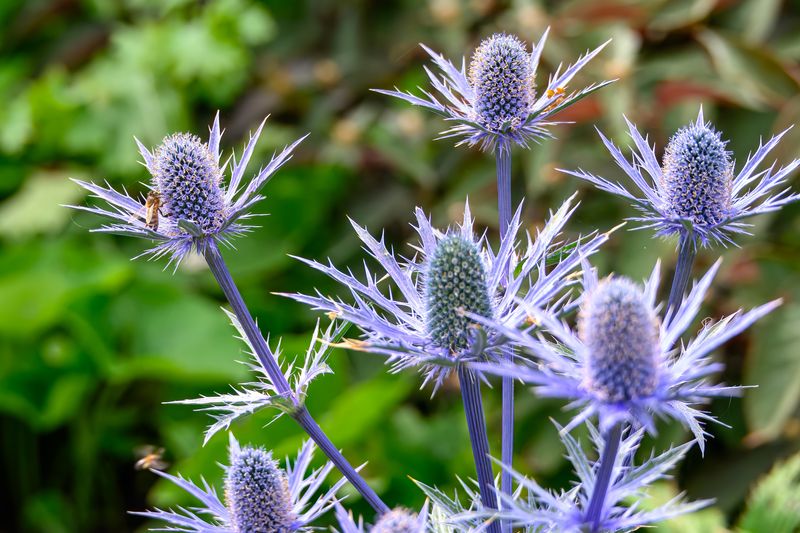If there’s one color that is almost universally associated with nature, it’s green (just don’t tell the mammals). No prizes for guessing why – green is overwhelmingly present in the plant kingdom. Once we start thinking about fruits and flowers, more of the rainbow starts to emerge, but with one notable exception. Where is all the blue?
Now, we’re not claiming there’s no blue to be found among plants. Several common garden varieties – like hydrangeas, cornflowers, and delphiniums – come in true blue varieties, and striking rarities like the aptly named sapphire tower plant fly the azure flag. Some sea holly (Eryngium) species even take it a step further with electric blue stems.
But there are also a lot of pesky purple imposters out there. Heck, even blueberries don’t actually contain any blue pigment. So why is blue such a rare color among plants (at least, on Earth)?
Plants use light to create the energy they need to live via the process of photosynthesis. Within the full spectrum of colors of visible light, blue is the most energetic and so is the one plants want to absorb lots of. Pigments show up as the color of light they reflect, rather than absorb. So blue plants would reflect blue light, rather than absorbing all the energy it has to offer. This is not a great strategy if you want to maximize growth, which is why most plant stems and leaves are not blue. Instead, they contain chlorophyll, which reflects green light and makes the natural world appear so verdant.
When it comes to flowers, however, blue coloration can be beneficial, helping plants to stand out and attract pollinators in a crowded field of yellows and reds. A recent study delved deeper into this and found that blue flowers were closely associated with one particular pollinating insect: bees.

“Bees have photoreceptors that are sensitive to ultraviolet, blue and green wavelengths, and they also show a preference for 'bluish' colours,” wrote study author Dr Adrian Dyer for The Conversation. “The reason why bees have a preference for bluish flowers remains an open field of research,” Dyer added, but it’s hard to argue with the team's data, which showed blue pigment appearing only among flowers that need to attract bees and other insects, and not those that are pollinated without insect assistance.
But despite how useful blue flowers can be to some plants in the competition for bees’ attention, making blue pigment is no easy task.
Humans also figured this out centuries ago when we tried to start making blue dyes. Because of the scarcity of blue in nature – although the Ancients did pretty well experimenting with lapis lazuli and azurite – we had to try and make our own. The first synthetic pigment ever created was Egyptian Blue, but for thousands of years before that human art was overwhelmingly daubed in shades of red and brown.
New blue pigments are still highly prized today, as a team at Oregon State University found out in 2009 when they accidentally synthesized a brilliant blue compound they called YInMn blue.
The pigments largely responsible for the few blue flowers that do exist are the anthocyanins. More than 600 of them have been identified, which can be classified into six groups. Which ones are present in a particular plant is only part of the picture; anthocyanins can also undergo modifications, interact with metals or other pigments, and even be affected by the surrounding pH, producing an array of hues including blue.
And while all these complications seemingly make a true blue color difficult to achieve for plants, there is another piece to this puzzle. We might not see much blue in the natural world around us, but the species that really matter don’t perceive color the way we do.
“[W]hile humans view blue as a less frequently evolved color in nature, to understand signaling, it is essential to employ models of biologically relevant observers,” Dyer and the team wrote in their paper. In other words, it doesn’t really matter what we see – it matters what the bees see.
“By doing so, we conclude that short wavelength reflecting blue flowers are indeed frequent in nature when considering the color vision and preferences of bees,” they concluded.
So, there you have it. There are more blue flowers out there than you might think; it’s just that our human eyes can’t make them out. Luckily for the plants, it isn’t human eyes they really have to worry about.
All “explainer” articles are confirmed by fact checkers to be correct at time of publishing. Text, images, and links may be edited, removed, or added to at a later date to keep information current.





